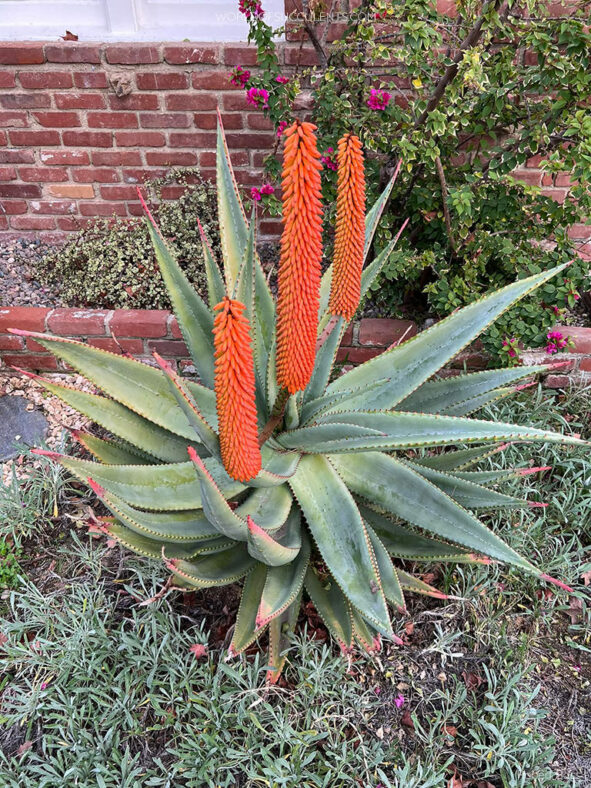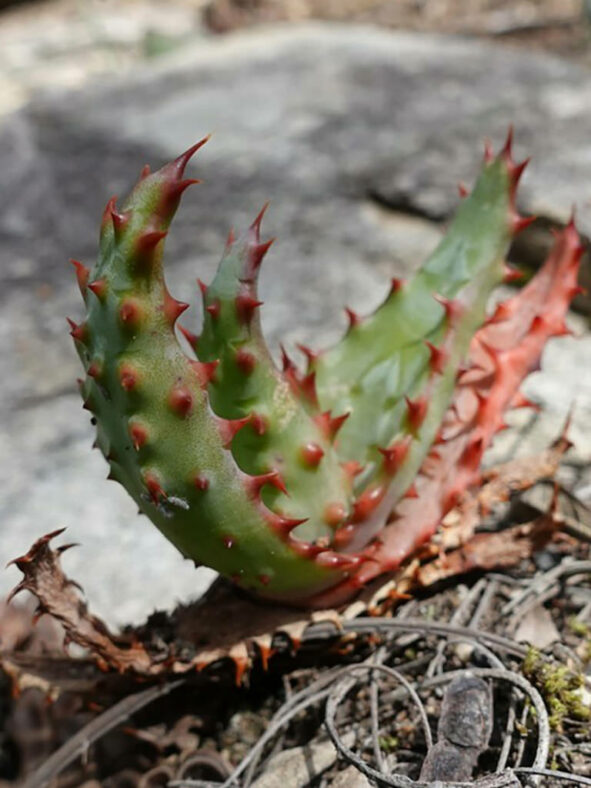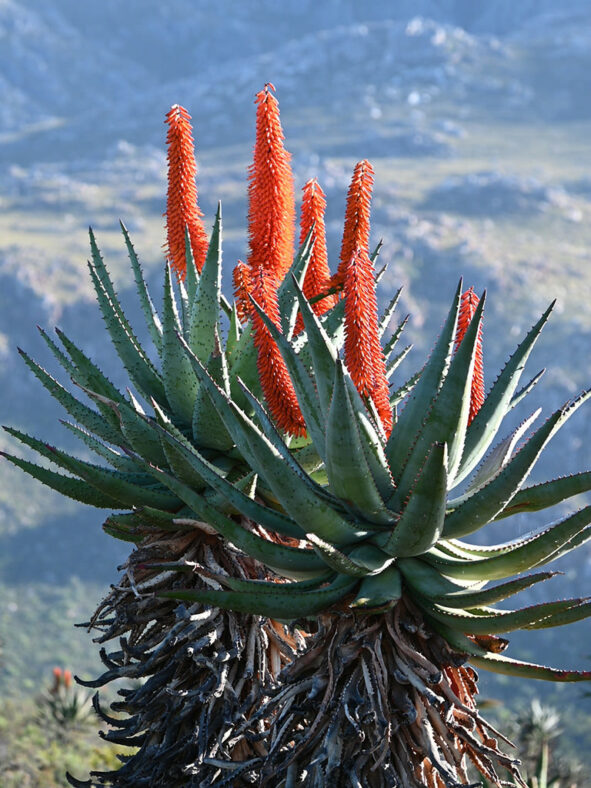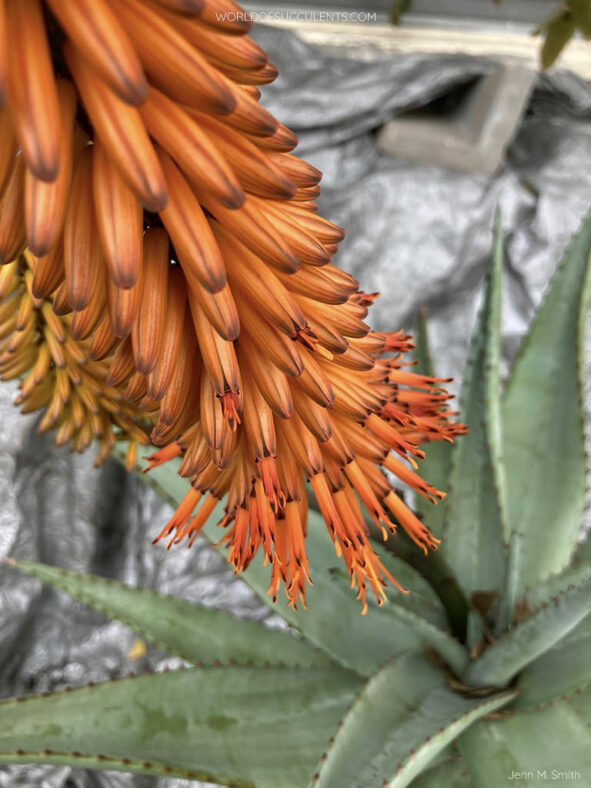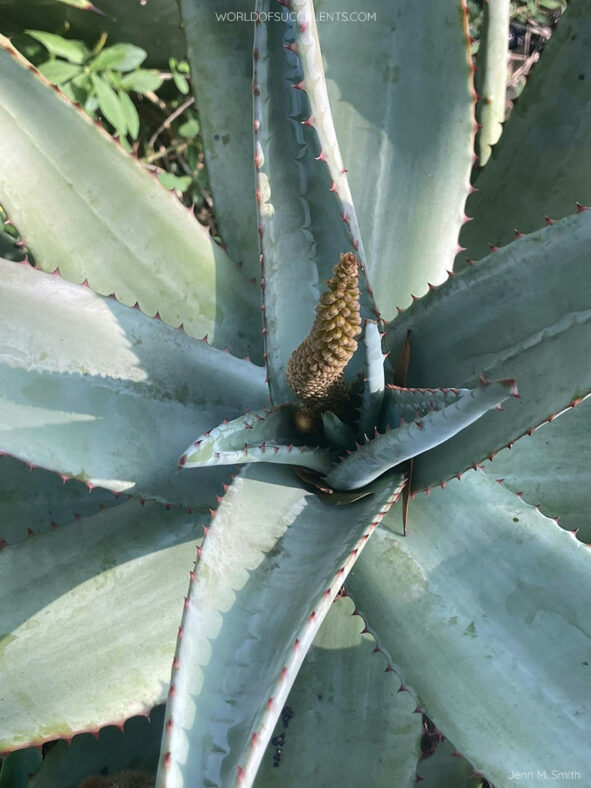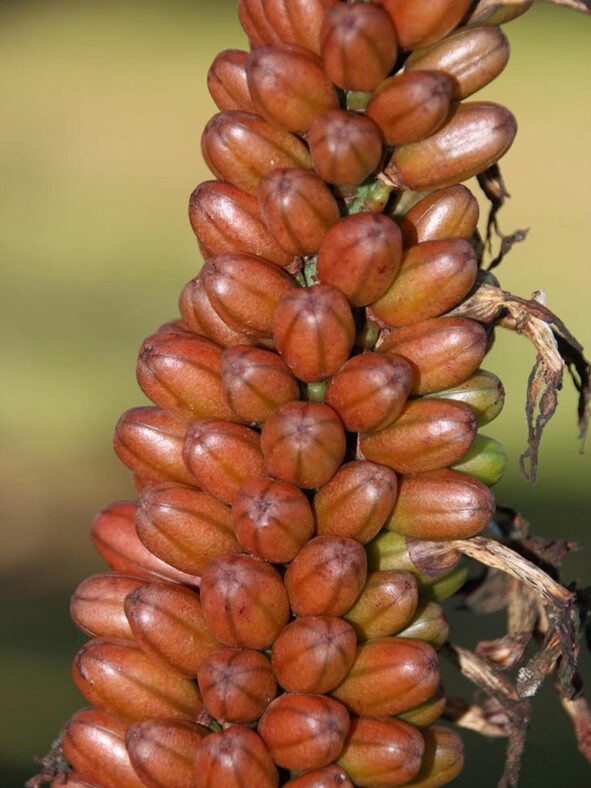Aloe ferox, commonly known as Cape Aloe or Bitter Aloe, has been used in traditional medicine for centuries and is one of the most widely used medicinal plants today. The bitter juice, found just beneath the skin, has been collected as a renewable resource. Additionally, the gel-like flesh inside the leaves is commonly used in cosmetics products and is reported to have wound-healing properties.
Scientific Name
Aloe ferox Mill.
Common Name(s)
Alligator Jaw Aloe, Bitter Aloe, Cape Aloe, Cape Prickly Aloe, Cultivated Aloe, Medicinal Aloe, New Aloe, Red Aloe, Tap Aloe
Synonym(s)
Aloe perfoliata var. ferox, Busipho ferox, Pachidendron ferox
Scientific Classification
Family: Asphodelaceae
Subfamily: Asphodeloideae
Genus: Aloe
Etymology
The specific epithet "ferox" (pronounced FER-oks) means "warlike" and refers to the sharp marginal teeth of the leaves of this species.
Origin
Aloe ferox is native to South Africa (Western Cape, Eastern Cape, and Free State) and southern Lesotho. It grows in rocky areas on hills and in grassy fynbos.
Description
Aloe ferox is a tree-like succulent with an upright, unbranched stem with persistent, down-curved dried leaves and a terminal rosette of typically erect to erect-spreading leaves. This plant can grow up to 16.4 feet (5 m) tall. The leaves are lance-shaped, shallowly channeled, and have stout, deltoid, reddish to brownish-red teeth along the margins. They can measure up to 3.3 feet (1 m) long and 6 inches (15 cm) wide. Typically, the leaves are dull green, sometimes with a reddish tinge, and may be either smooth or have irregularly scattered spines on both surfaces.
During the winter and spring, Aloe ferox produces a striking candelabra-like inflorescence, usually consisting of 5 to 8 branches that bear dense, cylindrical racemes. Each raceme can reach a length of 32 inches (80 cm) and a diameter of 4.8 inches (12 cm). The flowers range in color from scarlet to orange or rarely white, and they have brown to deep brown inner segment tips, measuring up to 13 inches (3.3 cm) long. Once pollinated, the flowers develop into smooth, fleshy fruits that are green to red-brown capsules containing numerous tiny, dark seeds with papery wings. When ripe, the fruits dry out and split open, releasing the seeds.
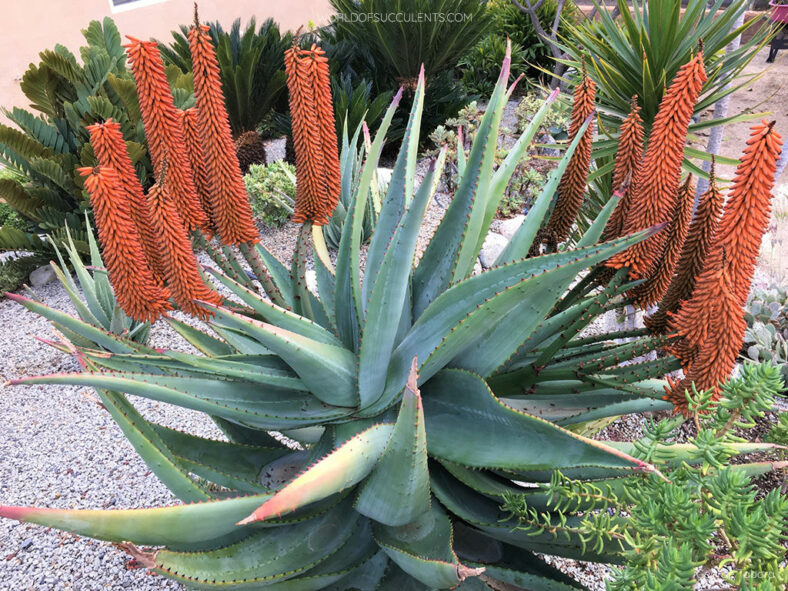
How to Grow and Care for Aloe ferox
Light: When growing Aloe ferox indoors, place it in a window with plenty of bright indirect light. Rotate the pot once or twice a week to ensure all sides of the plant receive equal lighting. Outdoors, the plant prefers light shade, especially during the hottest parts of the day.
Soil: Great drainage is essential for growing this plant because too much moisture for an extended period can cause root rot. Use commercial soil for succulents, or make your own well-draining mix.
Temperature: When temperatures shift below 50 °F (10 °C), it is time to bring this plant inside. It tolerates heat fairly well but will not survive a hard frost. Aloe ferox grows best in USDA Plant Hardiness Zones 9b to 11b, with average minimum winter temperatures ranging from 25 to 50 °F (-3.9 to 10 °C).
Watering: This plant needs regular watering but can tolerate drought conditions for short periods. Water deeply, but only when the soil is completely dry to the touch, and do not let water stand in the rosettes. Cut back on watering during the winter months.
Fertilizing: Although it generally does not require fertilizer, Aloe ferox will benefit from extra nutrients. Use a water-soluble fertilizer diluted to half the recommended strength.
Repotting: If planted in a pot that is large enough, this plant can stay there for many years. Only repot as needed during the spring. Pick a pot that is one size larger and has drainage holes.
Propagation: To propagate Aloe ferox, remove the offsets from a mature plant from late spring to early summer. It is also easy to start from seeds. For best results, sow the seeds during the warm months.
Learn more at How to Grow and Care for Aloe.
Toxicity of Aloe ferox
Aloe ferox is non-toxic to people but is mild to moderately toxic to pets.
Hybrids of Aloe ferox
Links
- Back to genus Aloe
- Succupedia: Browse succulents by Scientific Name, Common Name, Genus, Family, USDA Hardiness Zone, Origin, or cacti by Genus
Photo Gallery
Click on a photo to see a larger version.
